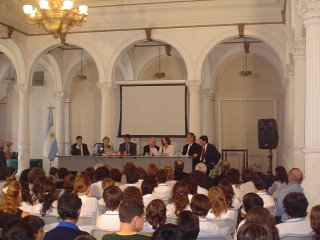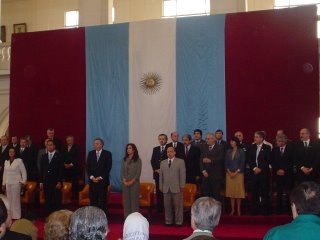March 24, 1976.
March 24, 1976, will be remembered as one of the darkest days in
On that day, a military junta overthrew a democratically elected government. Over the next 8 years, up to 30,000 ‘dissidents’ were disappeared.
In what was officially labelled the National Reorganization Process, the dictatorship systematically terrorized its citizenry on ideological grounds. The government closed congress, banned political parties, abolished freedom of speech and freedom of press.
In what was claimed to be a war against terrorist and communist groups, the military government persecuted, tortured, and killed citizens who opposed or questioned the dictatorship, expressed leftist views, or simply appeared in the address books of people considered subversive.
According to the National Commission on the Disappearance of Persons (CONADEP): among the victims still missing and those who were subsequently released from secret detention centres are people from all walks of life:
Blue-collar workers 30.2 %
Students 21.0 %
White-collar workers 17.9 %
Professionals 10.7 %
Teachers 5.7 %
Self-employed and others 5.0 %
Housewives 3.8 %
Military conscripts and members of the security forces 2.5 %
Journalists 1.6 %
Actors, performers, etc. 1.3 %
Nuns, priests, etc 0.3 %
CONADEP, established by the democratic government which followed the dictatorship, produced a harrowing document entitled Nunca Más. The torture testimonies are deeply disturbing, yet vital to understanding what truly happened during this so-called ‘reorganization process’. These testimonies are essential for constructing a collective memory that forces the country to learn from its past and help build a different future.
This past week I was impressed by the national and international efforts to remember what happened thirty years ago, on March 26.
In
In
On Thursday I attended an event in which Ernesto Sábato, the famous author and former President of CONADEP, led a remembrance ceremony at the Ministry of Education (pictured above). Over 200 students attended the event. They watched a remarkable documentary by Roman Lejtman, titled “The 24th of March, 1976-2006. From horror to hope”. The students then were able to ask questions to those adults on the panel who lived through the dictatorship.
The following day I traveled to the
Earlier in the month, Kirchner succeeded in making March 24 a permanent holiday, to be called the "National Day of Memory for Truth and Justice." While the move is undoubtedly well-intentioned, I worry that Argentine society, particularly its children, will not take it upon themselves to remember the meaning of this date when on holiday.
Considering how dedicated this government, particularly the President and the Ministry of Education, were in organizing the numerous events and commemorations throughout the week, I hope I am proved wrong in the years to come.



0 Comments:
Post a Comment
<< Home